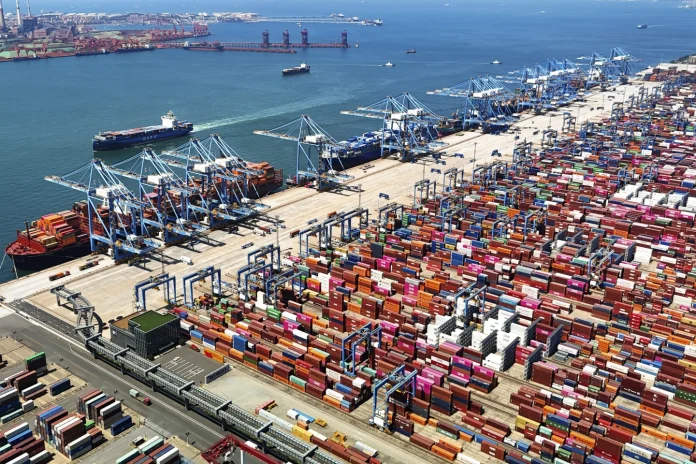China’s exports grew at the fastest pace in fifteen months in June, while imports unexpectedly contracted amid weak domestic demand, customs data showed on Friday.
China’s exports accelerate despite rising trade tensions. It totalled $302.35 billion in May, up 7.6 per cent from the same month last year, according to Chinese customs data. Exports showed the fastest growth themes since April 2023, although analysts had predicted a 6 per cent rise in the figure. Imports, on the other hand, disappointed, rising just 1.8 per cent instead of the expected 4 per cent to $219.73 billion.
The surge in Chinese exports was partly due to a lower base: a year ago in May, they fell 7.5 per cent. Exports rose just 1.5 per cent year-on-year in April, while imports rose 8.4 per cent.
In the first five months of 2024, exports are up 2.7 per cent year-on-year, while imports are up 2.9 per cent.
What accounts for growth of exports
The rise in exports comes amid China’s escalating trade relations with the US and Europe. The US is raising tariffs on Chinese-made electric cars, and Europe is not far behind the move either.
But the increased tariffs are unlikely to immediately jeopardise Chinese exports as companies accelerate shipments to get ahead of the duties, says Zichun Huang of Capital Economics. Exports will be supported by a weaker real effective exchange rate, she adds.
The ten ASEAN countries remain the main destinations for Chinese goods. From January to May, exports there rose 9.7 per cent year-on-year to $50.83 billion. Exports to the US rose 0.2 per cent over the same period, while shipments to the EU fell 3.9 per cent.
Steel, automobiles, home appliances and ships were the fastest growing categories of Chinese exports. In the first five months of this year, China exported 569,000 cars, up 26.8 per cent from the same period last year. But China fears that duties in the US and potentially the EU on its electric cars will reduce exports amid weakening demand at home.
If tariffs on China’s strategic exports and cars are aggressive, there is the potential for retaliation and escalation of trade friction, notes Lynn Song of ING Economics noted. “We remain cautious on the outlook for trade for the second half of the year and expect its contribution to economic growth to decline,” she said in her note.
China’s manufacturing activity slowed more sharply in May, according to an official survey released last week. The manufacturing purchasing managers’ index from the China Federation of Logistics and Purchasing fell to 49.5 from 50.4 in April on a scale of up to 100, where 50 signifies the gap between growth and contraction.
China is struggling to recover from the COVID-19 pandemic as it faces weakening demand globally after the US Federal Reserve and other central banks raised interest rates to fight inflation.
The downturn in China’s property sector is putting pressure on economic growth. China has set its economic growth target for this year at around 5%. According to economists, this target will require additional policy support.
